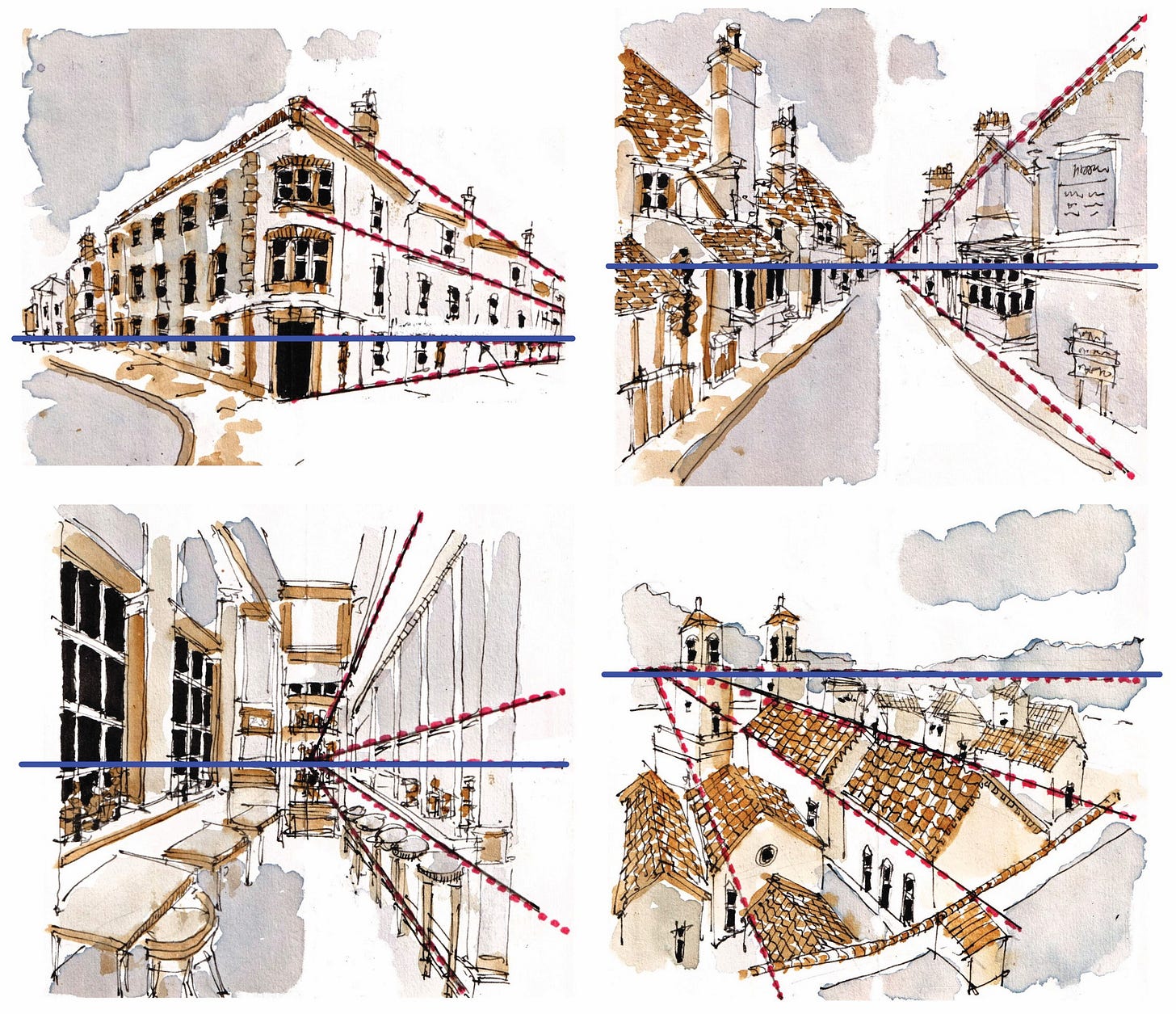Notes on Perspective in Sketching
All about horizon line and vanishing points
Here are some notes I made on the basics of sketching in perspective. Because we rarely see things in elevation only, it’s important to be aware of these basics, and it makes sketching easier. Perspective is important as it's what gives things a true sense of depth and helps to read the sketch and guides our eyes in a certain way.
Horizon Line
The first thing to consider is the horizon line (eye level). If you’re sketching on location, or from a photo you have taken, the horizon line is likely to be at your standing or sitting height. In the sketch above, the horizon line is the blue horizontal line that is at head height. If it’s at standing head height all heads in the picture will be at this height regardless of how near or far they are.
Vanishing Points
For basic sketching, there will normally either be one or two vanishing points (one or two point perspective). The sketch above is one point and the vanishing point is where the lines converge in the centre. The sketch below is two point and the vanishing points, which could well be off the page as shown, are again where the lines converge.
Lines above and below the horizon line
As shown in all of these sketches lines above the horizon line will slope down towards the vanishing point and lines below will slope up towards it. The higher or lower the line is, the more the angle of the slope to converge at the vanishing point.
Elevated Horizon Line
There will, of course, be occasions when we are not standing on the ground - looking out of a window for example. The horizon line will still be the head height (other heads will not be at the same height). In the example below the scene is being viewed from an elevated position looking out of a tall building - the horizon line is at our head height and the lines follow a one point perspective to the corner of the sketch.
If you want to know more about perspective and sketching in general I am planning to do a series of workshops on the subject - check out the website for updates on this.
What’s coming?
This Substack is intended to expand upon the ideas of urban and landscape sketching with minimal materials, to provide examples and inspiration.
It’s all about getting your thoughts and feelings out onto paper without too many rules to follow - this is sketching - not drawing.
Thanks for reading this and coming on the journey with me. Enjoy the journey and the destination can just look after itself.
All the best,
Peter







